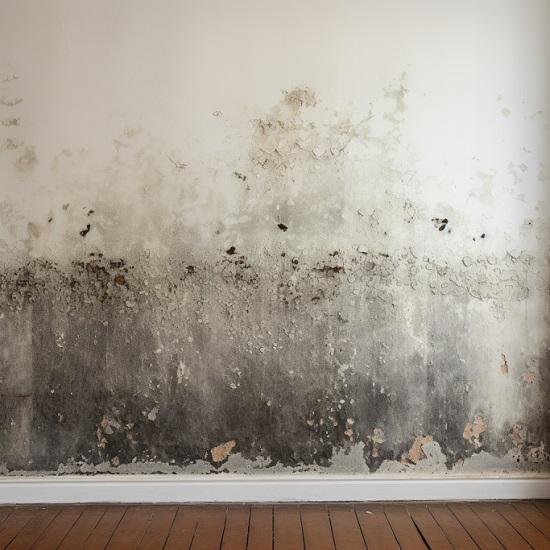Your Ultimate Guide to Article Mold And Mildew Remediation Methods
In the after-effects of mold and mildew infestation, understanding just how to successfully get rid of the mold and avoid its reoccurrence is paramount for keeping a healthy interior atmosphere. From choosing the best cleaning and decontaminating techniques to carrying out strategies for long-term mold and mildew avoidance, each step in the remediation trip plays a crucial role in guaranteeing an effective outcome.
Comprehending Post-Mold Removal Refine
After completing the mold and mildew remediation process, it is vital to understand the post-mold remediation techniques that are essential to make sure a detailed and effective cleaning. As soon as the mold and mildew has been gotten rid of, the following step includes cleansing and disinfecting the influenced locations to avoid any regrowth of mold and mildew. This includes using specialized cleaning up representatives to wipe down surface areas and eliminate any type of remaining mold and mildew spores. It is necessary to dry out the location completely to dissuade the growth of mold in the future (After mold remediation). Correct ventilation and dehumidification can help in this process.
Additionally, carrying out a final inspection post-remediation is vital to make sure that all mold has actually been efficiently gotten rid of. This evaluation must entail a comprehensive visual check as well as possibly air sampling to validate the lack of mold and mildew spores airborne. Added remediation might be necessary if the assessment reveals any lingering mold and mildew. Educating occupants on precautionary procedures such as managing dampness degrees and promptly resolving any type of water leaks can assist preserve a mold-free atmosphere.
Effective Cleaning and Decontaminating Techniques

Avoiding Future Mold Development

Value of Appropriate Air Flow
Correct air flow plays an important duty in preventing wetness build-up, a key aspect in mold and mildew growth within indoor atmospheres. Effective air flow systems help remove excess humidity from the air, decreasing the chances of mold and mildew spores discovering the moisture they need to spread out and sprout. Without appropriate air flow, interior areas can come to be a breeding place for mold, leading to prospective health risks and architectural damages.
By making certain correct air circulation, ventilation systems can additionally assist in drying resource moist areas faster after water damages or flooding events, even more discouraging mold and mildew growth. Post Mold remediation cleaning. Precede like washrooms, cellars, kitchen areas, and attics where moisture levels often tend to be higher, mounting and keeping effective ventilation systems is important in stopping mold and mildew invasions

Surveillance and Maintenance Tips
Offered the essential function that proper air flow plays in avoiding mold development, it is crucial to develop effective surveillance and upkeep tips to guarantee the continued capability of air flow systems. Routine assessments of ventilation systems ought to be conducted to look for any type of indications of obstructions, leakages, or breakdowns that might impede appropriate air flow. Tracking humidity degrees within the home is additionally essential, as high humidity can contribute to mold growth. Setting up a hygrometer can aid track humidity degrees and sharp home owners to any spikes that might require focus. Furthermore, ensuring that air filters are routinely cleaned up or replaced is vital for maintaining the performance of the ventilation system. Executing a routine for regular upkeep jobs, such as duct cleansing and cooling and heating system inspections, can aid protect against concerns before they intensify. By remaining conscientious and positive to the problem of ventilation systems, home proprietors can properly alleviate the risk of mold and mildew regrowth and keep a healthy and balanced indoor environment.
Verdict
Finally, post-mold removal methods are important for making certain a secure and clean environment. Recognizing the procedure, implementing effective cleaning and disinfecting methods, stopping future mold development, maintaining appropriate air flow, and routine surveillance are all critical actions in the removal process. By following these guidelines, you can efficiently remove mold and mildew and prevent its return, functioning or advertising a healthy living area for all passengers.
In the after-effects of mold infestation, recognizing just how to efficiently remove the mold and mildew and stop its reoccurrence is extremely important for maintaining a healthy and balanced interior setting. As soon as the mold has actually been gotten rid of, the following action entails cleansing and disinfecting the influenced areas to stop any regrowth of mold - Post Mold remediation cleaning. After getting rid of visible mold and mildew development, it is crucial to clean up all surfaces in the affected area to eliminate any kind of staying mold spores. To additionally enhance mold prevention actions, it is crucial to deal with underlying issues that initially led to mold growth.Given the important duty that proper ventilation plays in stopping mold and mildew development, it is critical to establish effective surveillance and maintenance tips to guarantee the ongoing performance of ventilation systems